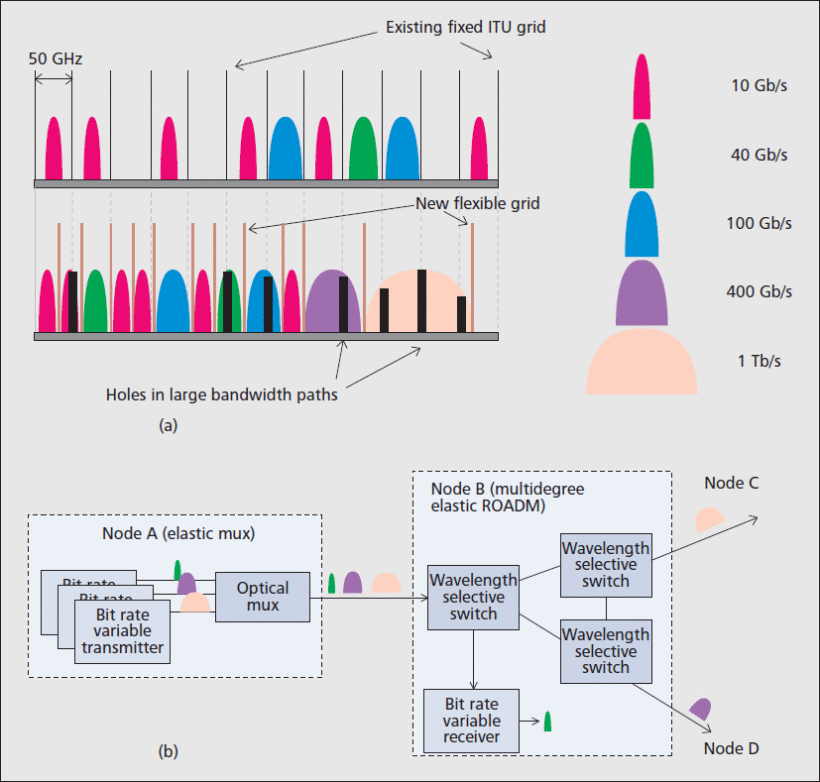Elastic optical networks (EONs) are an application of wavelength division multiplexing (WDM) that operates using very small spacings between transmittable frequencies, usually 12.5 GHz (or 0.2nm separation). Most EONs are centered at 193.1 THz (or 1553.6nm). What makes EONs especially unique are the two factors of a FSO dynamic system: channel adaptation and discrete frequency selection.
EONs are currently being researched since they enable adaptation to channel bandwidth requirements and properly route signals depending on how much bandwidth is needed. What separates EONs from traditional WDM systems is the ability to change the transmission channel spacing. For example, if a channel is allotted 12.5 GHz of space but only uses 5 GHz, the EON will compress the spacing for that channel to be roughly 5 GHz, within some safety margin. If the channel needs more bandwidth, the EON will expand accordingly.
Rather than allocating channel space for all wavelengths at once (as in WDM), discrete frequency selection assigns only the required amount of spectrum for a signal. In this sense, if there isn’t a lot of traffic on a channel at a single time, a lot of the spectrum will go unused, saving power. By utilizing the broad channels options available, signals can be easily and quickly routed by both bandwidth and data size. The spacing between frequencies is also not fixed like it is in WDM. The spacing can be expanded or contracted to account for the traffic on each channel. [2]
In the picture below, the top left graph shows a fixed or static system where the channel spacing is set to 50 GHz. The middle left graph shows a dynamic system where the channel spacing has been adapted to account for the bandwidth needed in each channel.

